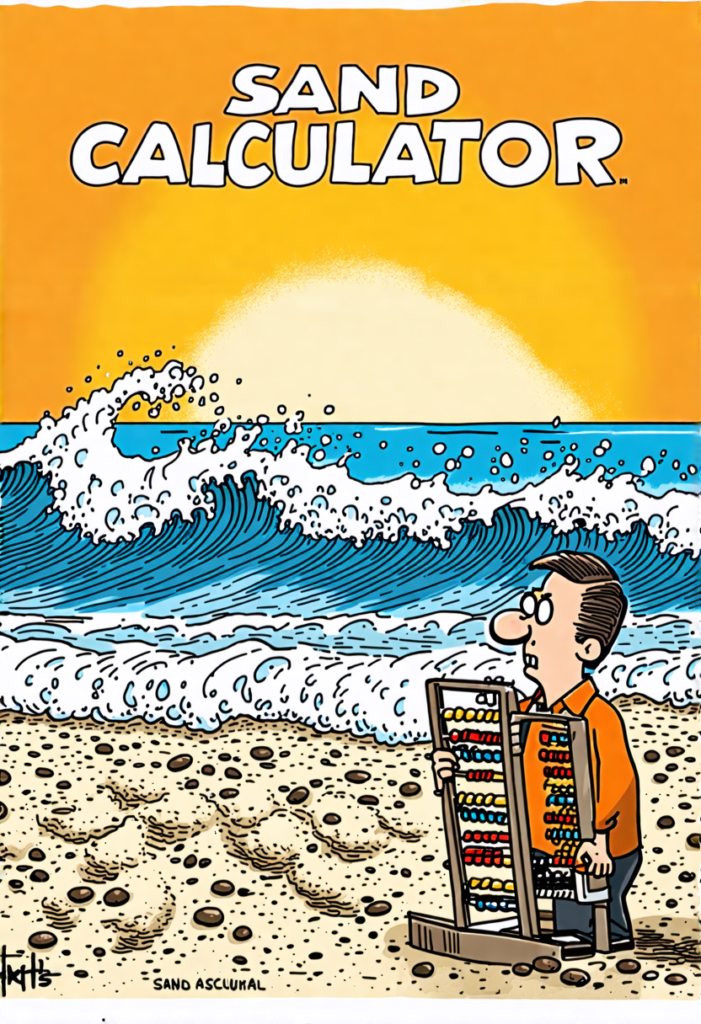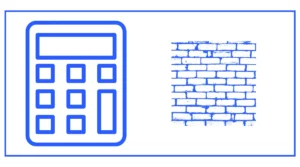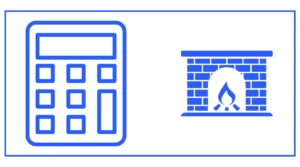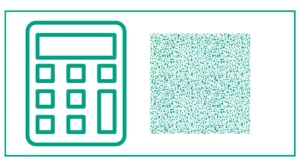Sand Calculator
Are you looking for an easy way to calculate how much sand you need for your project?
This sand calculator helps you calculate the total area, the volume and weight of the sand needed, the price per m³, and the total cost.
All you need to enter is the project’s length, width, and depth. You can also add the price per tonne to find the total cost.
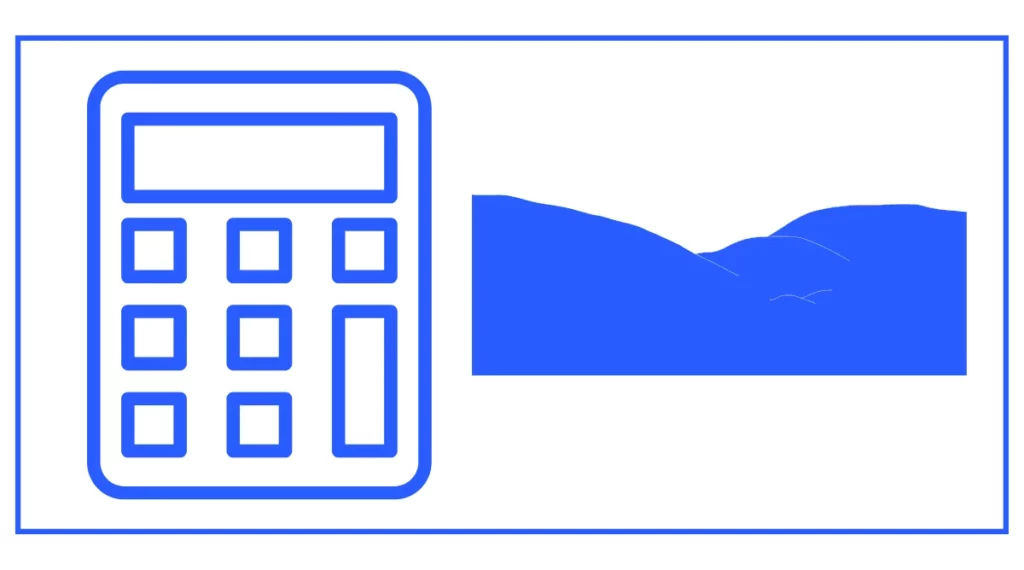
You might want to use these lawn and tree calculators.
Understanding the Importance of Accurate Sand Calculation
Before we dive into the specifics of using our sand calculator, let’s explore why accurate sand calculation is so vital:
- Cost Efficiency: Overestimating the amount of sand needed can lead to unnecessary expenses, while underestimating can result in project delays and additional costs for rush deliveries.
- Time Management: Knowing the exact amount of sand required allows you to plan your project more effectively, reducing downtime and improving overall efficiency.
- Environmental Considerations: Accurate calculations help minimize waste, contributing to more sustainable construction practices.
- Quality Control: Using the right amount of sand ensures the proper mix ratios for concrete and other applications, leading to better structural integrity and durability.
Now that we understand the importance of precise sand calculation, let’s explore how our sand calculator can help you achieve this accuracy.
How to Use Our Sand Calculator
Our user-friendly sand calculator is designed to make estimating sand quantities a breeze. Here’s a step-by-step guide on how to use it:
- Measure Your Project Area: Begin by measuring the length and width of the area you need to fill with sand. For rectangular areas, this is straightforward. For irregular shapes, break the area into smaller rectangles and calculate each separately.
- Determine the Required Depth: Decide how deep you need the sand layer to be. This will vary depending on your project requirements.
- Enter the Dimensions: Input the length, width, and depth into the appropriate fields in our sand calculator.
- Select the Unit of Measurement: Choose between metric (meters, centimeters) or imperial (feet, inches) units, depending on your preference.
- Specify Sand Density: If known, enter the density of the sand you’re using. If unsure, our calculator provides a default value based on average sand density.
- Calculate: Click the “Calculate” button, and our sand calculator will instantly provide you with the volume of sand needed in cubic yards or cubic meters.
Understanding Sand Volume and Weight
When calculating sand quantities, it’s essential to understand the relationship between volume and weight. Sand is typically measured and sold by volume (cubic yards or cubic meters), but it’s also helpful to know the weight for transportation and structural considerations.
The weight of sand can vary depending on its moisture content and composition, but on average:
- Dry sand weighs approximately 100 lbs per cubic foot (1,602 kg per cubic meter)
- Wet sand can weigh up to 120 lbs per cubic foot (1,922 kg per cubic meter)
Our sand calculator can also estimate the weight of the sand you need, which is particularly useful when arranging for delivery or considering load-bearing capacities.
Common Applications for the Sand Calculator
Our sand calculator is versatile and can be used for various projects. Here are some common applications:
1. Sandbox Construction
Building a sandbox for children? Use our calculator to determine how much play sand you’ll need. For example, if you’re creating a 6 ft x 6 ft sandbox with a depth of 6 inches:
- Length: 6 ft
- Width: 6 ft
- Depth: 6 inches (0.5 ft)
Our sand calculator would determine that you need approximately 1.33 cubic yards of sand.
2. Paver Base Preparation
When laying pavers, a sand base is crucial for proper installation. Typically, you’ll need a 1-inch layer of sand. For a 20 ft x 15 ft patio:
- Length: 20 ft
- Width: 15 ft
- Depth: 1 inch (0.083 ft)
The sand calculator would show you need about 0.93 cubic yards of sand for the base layer.
3. Concrete Mixing
Sand is a key component in concrete mixtures. For a typical concrete mix, you’ll need about 1 part cement, 2 parts sand, and 3 parts gravel. If you’re pouring a 10 ft x 10 ft slab with a 4-inch thickness:
- Length: 10 ft
- Width: 10 ft
- Depth: 4 inches (0.33 ft)
Our calculator would indicate you need approximately 1.23 cubic yards of concrete. For the sand component, you’d need about 0.41 cubic yards (1/3 of the total volume).
Tips for Accurate Sand Calculation
To ensure the most accurate results from our sand calculator, consider these tips:
- Measure Carefully: Double-check your measurements before inputting them into the calculator. Even small errors can lead to significant discrepancies in the final calculation.
- Account for Compaction: Sand tends to compact when settled. Consider adding an extra 5-10% to your calculated amount to account for this.
- Consider the Project Type: Different projects may require different types of sand. For example, play sand for a sandbox is finer than the coarse sand used in concrete mixing. Make sure you’re using the appropriate type for your project.
- Factor in Wastage: It’s always wise to order slightly more sand than the calculated amount to account for spillage and wastage during the project.
- Understand Local Availability: Sand is often sold in specific unit sizes (e.g., by the ton or cubic yard). Round up your calculated amount to the nearest available unit when ordering.
Beyond Sand: Using the Calculator for Other Materials
While our calculator is primarily designed for sand, it can also be used to estimate quantities of similar materials such as gravel, topsoil, or mulch. Simply adjust the density value in the calculator to match the material you’re working with.
For instance:
- Gravel typically weighs about 1,520 kg per cubic meter
- Topsoil weighs approximately 1,200 kg per cubic meter
- Mulch can vary greatly but averages around 700 kg per cubic meter
By inputting these density values, you can use our calculator for a wide range of landscaping and construction materials.
The Environmental Impact of Sand Usage
As we use our sand calculator to determine the precise amounts needed for various projects, it’s important to consider the environmental impact of sand extraction and usage. Sand is the second most consumed natural resource after water, and its extraction can have significant ecological consequences.
Here are some key points to consider:
- Sustainable Sourcing: When possible, opt for sand from sustainable sources or consider recycled alternatives.
- Efficient Use: Use our calculator to avoid overordering and wasting sand.
- Recycling: Look into options for recycling excess sand or using it in future projects.
- Alternative Materials: For some applications, consider alternatives to sand that may have a lower environmental impact.
